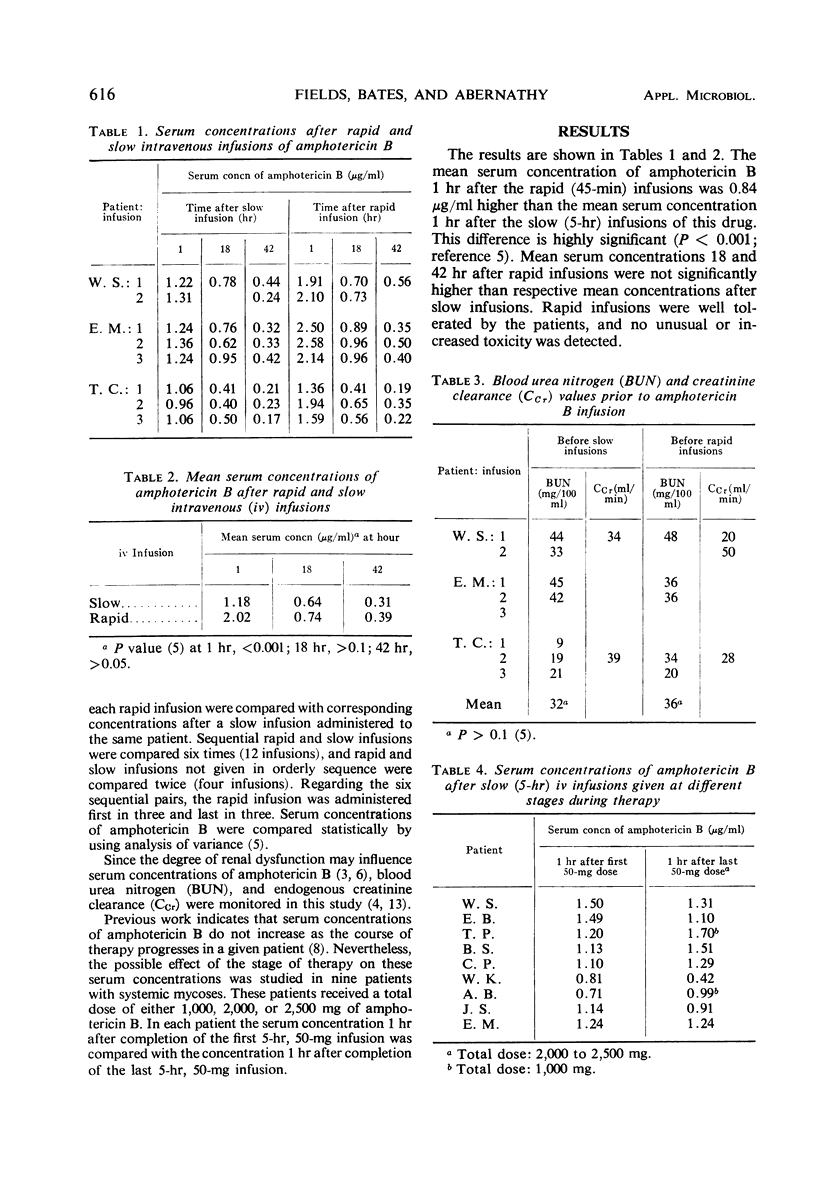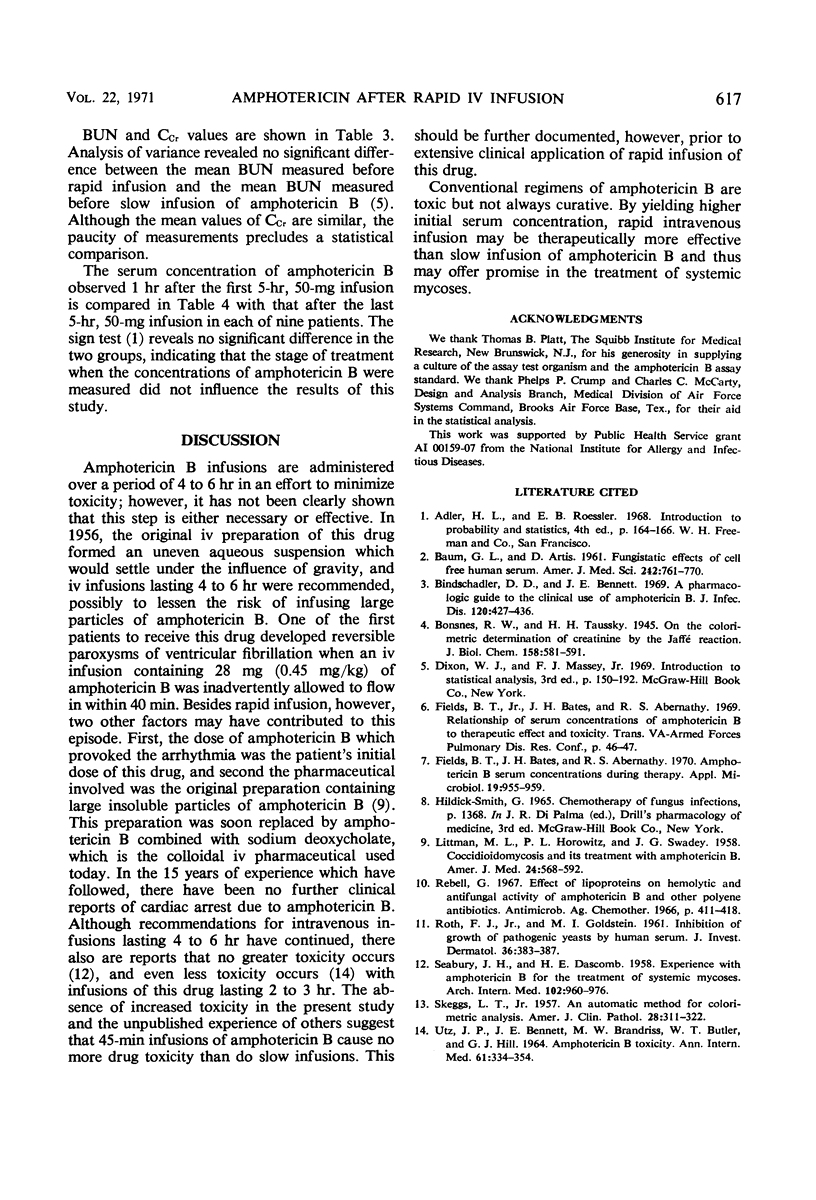Abstract
The magnitude of the concentrations of amphotericin B produced in serum of patients with systemic mycoses may significantly influence the outcome of therapy with this drug. Since amphotericin B is conventionally administered in intravenous infusions lasting 4 to 6 hr, we asked whether faster infusions of this drug might yield higher serum concentrations without an increase in dose. This question was studied in three patients who received 16 infusions of this drug: eight infusions administered slowly (5 hr) and eight administered rapidly (45 min). Serum concentrations after each rapid infusion were compared with those after a slow infusion administered to the same patient. The mean serum concentration of amphotericin B 1 hr after the rapid infusions (2.02 μg/ml) was significantly higher (P < 0.001) than the mean serum concentration of amphotericin B 1 hr after the slow infusions of this drug (1.18 μg/ml). Mean serum concentrations 18 and 42 hr after rapid infusion remained slightly but not significantly higher than respective mean concentrations after slow infusions. By yielding higher initial serum concentration, rapid intravenous infusion may be therapeutically more effective than slow infusion of amphotericin B. Although rapid infusions caused no more toxicity than did slow infusions, the lack of greater toxicity with rapid infusion of amphotericin B should be further documented prior to extensive clinical application of this procedure.
Full text
PDF


Selected References
These references are in PubMed. This may not be the complete list of references from this article.
- BAUM G. L., ARTIS D. Fungistatic effects of cell free human serum. Am J Med Sci. 1961 Dec;242:761–770. doi: 10.1097/00000441-196112000-00015. [DOI] [PubMed] [Google Scholar]
- Bindschadler D. D., Bennett J. E. A pharmacologic guide to the clinical use of amphotericin B. J Infect Dis. 1969 Oct;120(4):427–436. doi: 10.1093/infdis/120.4.427. [DOI] [PubMed] [Google Scholar]
- Fields B. T., Jr, Bates J. H., Abernathy R. S. Amphotericin B serum concentrations during therapy. Appl Microbiol. 1970 Jun;19(6):955–959. doi: 10.1128/am.19.6.955-959.1970. [DOI] [PMC free article] [PubMed] [Google Scholar]
- LITTMAN M. L., HOROWITZ P. L., SWADEY J. G. Coccidioidomycosis and its treatment with amphotericin B. Am J Med. 1958 Apr;24(4):568–592. doi: 10.1016/0002-9343(58)90297-3. [DOI] [PubMed] [Google Scholar]
- ROTH F. J., Jr, GOLDSTEIN M. I. Inhibition of growth of pathogenic yeasts by human serum. J Invest Dermatol. 1961 May;36:383–387. doi: 10.1038/jid.1961.59. [DOI] [PubMed] [Google Scholar]
- Rebell G. Effect of lipoproteins on hemolytic and antifungal activity of amphotericin B and other polyene antibiotics. Antimicrob Agents Chemother (Bethesda) 1966;6:411–418. doi: 10.1128/AAC.6.4.411. [DOI] [PubMed] [Google Scholar]
- SEABURY J. H., DASCOMB H. E. Experience with amphotericin B for the treatment of systemic mycoses. AMA Arch Intern Med. 1958 Dec;102(6):960–976. doi: 10.1001/archinte.1958.00260230106014. [DOI] [PubMed] [Google Scholar]
- SKEGGS L. T., Jr An automatic method for colorimetric analysis. Am J Clin Pathol. 1957 Sep;28(3):311–322. doi: 10.1093/ajcp/28.3_ts.311. [DOI] [PubMed] [Google Scholar]


